How Prompting and Fading Techniques Work in ABA Therapy
Unlocking Independence: The Role of Prompting and Fading in ABA
Understanding the Foundations of Prompts and Fading
Applied Behavior Analysis (ABA) therapy offers robust strategies to support individuals, particularly those with developmental disabilities or autism, in acquiring new skills. Central to these strategies are prompting and fading techniques, which foster independence by transitioning learners from reliance on guidance to autonomous task performance. This framework not only enhances skill acquisition but also builds learner confidence, paving the way for self-sufficiency in daily activities and learning environments.
The Process of Prompting and Fading in ABA
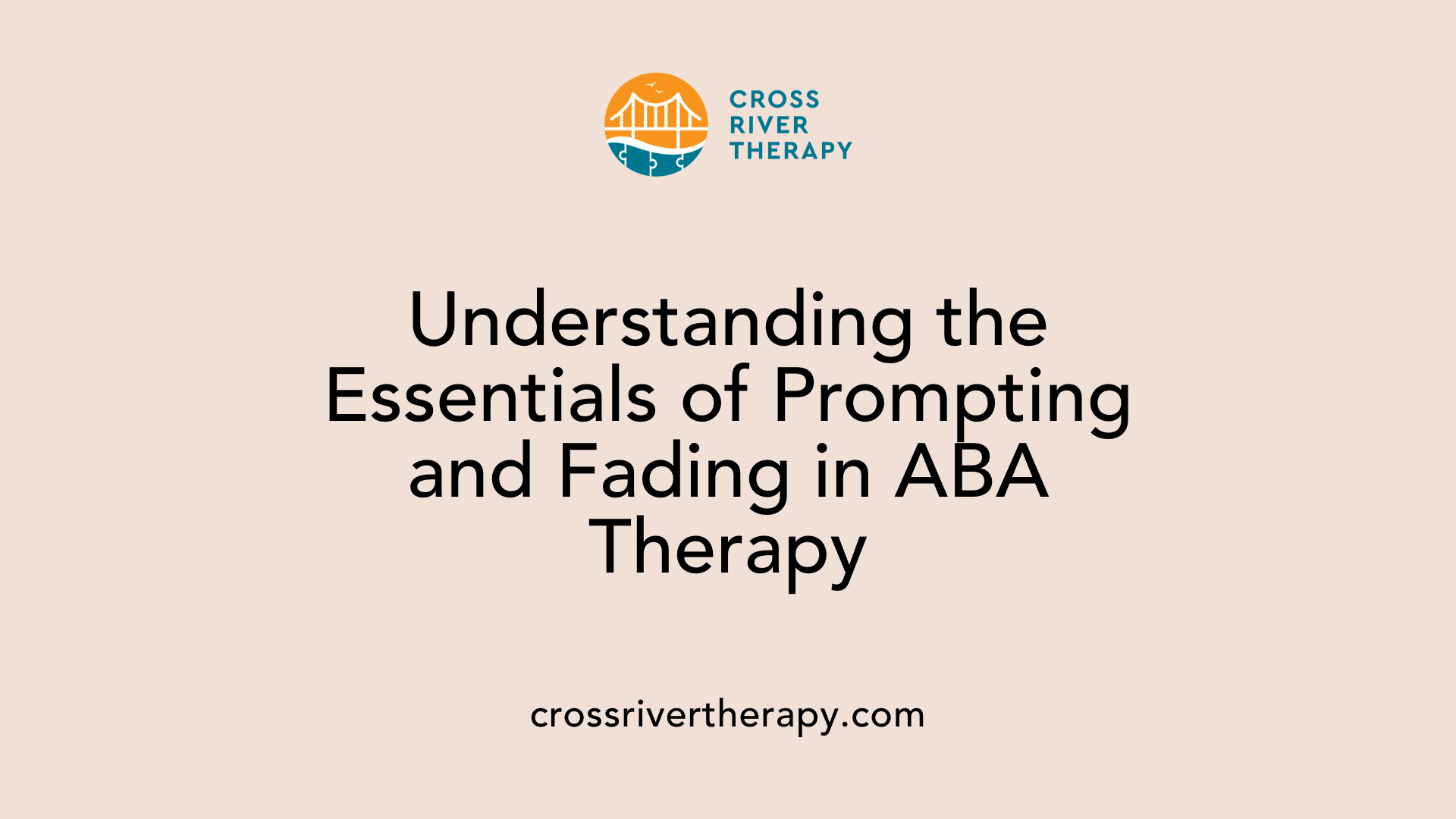
What is the process of prompting and fading in ABA therapy?
The process of prompting and fading in ABA (Applied Behavior Analysis) therapy is essential for teaching children to perform tasks independently. It begins by identifying the target behavior and assessing the child’s baseline performance. From there, educators select appropriate prompts tailored to individual needs. The prompts can vary from physical and verbal to visual cues, employed initially to encourage correct responses.
Once prompting has commenced, educators gradually reduce the level of assistance according to a structured prompt hierarchy. This means transitioning from more intrusive methods, like physical prompts, to less intrusive methods, such as verbal prompts or even natural cues. Techniques for fading include allowing wait time for responses, employing a Most-to-Least (MTL) or Least-to-Most (LTM) approach, and ensuring consistent reinforcement of correct behavior.
Effective prompt fading is critical; without it, children may struggle to learn and perform tasks independently, leading to potential dependency on prompts. This structured and patient approach not only promotes independence but also builds the child’s confidence in their abilities, facilitating long-term success in learning new skills.
Use of prompt hierarchy
The prompt hierarchy is a systematic framework that guides educators in selecting the right level of assistance for learners. It starts from the most intrusive prompts, offering hands-on support, and gradually shifts to less intrusive methods, promoting independence.
Transitioning to independent performance
As proficiency improves, the goal is to manage a seamless transition to independent performance. This is achieved by carefully monitoring each learner's progress and making timely adjustments to the level of prompting. Ultimately, the aim of the prompting and fading process is to reduce reliance on assistance while fostering self-sufficiency in various skills, enhancing their ability to perform tasks autonomously.
Techniques for Successful Prompt Fading
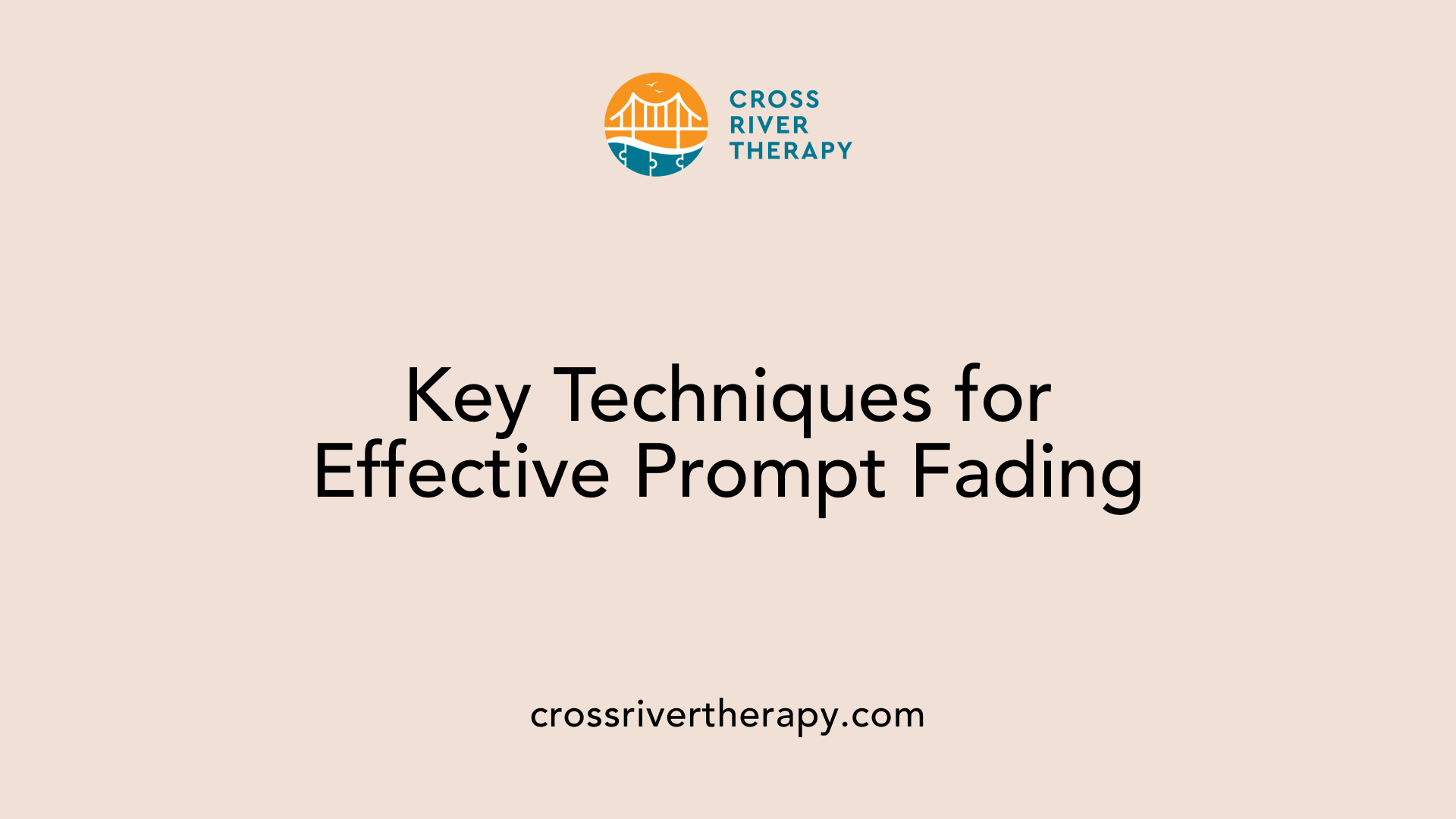
What are the techniques for prompt fading in ABA?
Techniques for prompt fading in Applied Behavior Analysis (ABA) are structured strategies aimed at reducing the level of assistance learners receive, encouraging them to perform tasks independently. Key methods include:
- Most-to-Least (MTL): This approach starts with the most intrusive prompts, such as full physical guidance or extensive verbal cues, and systematically reduces them as the learner gains proficiency.
- Least-to-Most (LTM): In contrast, LTM begins with the least intrusive support, allowing the learner to attempt the task independently, only increasing assistance if they struggle.
- Additional Techniques:
- Physical Fading: Gradually removing physical assistance involves varying levels of touch and guidance.
- Time Delays: Introducing pauses between the prompt and the expected behavior encourages independent attempts.
- Proximity Adjustments: Modifying the distance from the prompted object helps the learner to engage without reliance on the prompt.
- Muting the Stimulus: Reducing auditory or visual cues gradually can also aid in promoting autonomy.
Monitoring Progress
Effective progress tracking during prompt fading is crucial. Collecting data not only tracks learner success but also helps to fine-tune the fading strategies as needed. Regular assessment allows educators to adjust their techniques to prevent prompt dependency, ensuring that learners are on a path to independent skill acquisition.
Examples of Prompt Fading Techniques
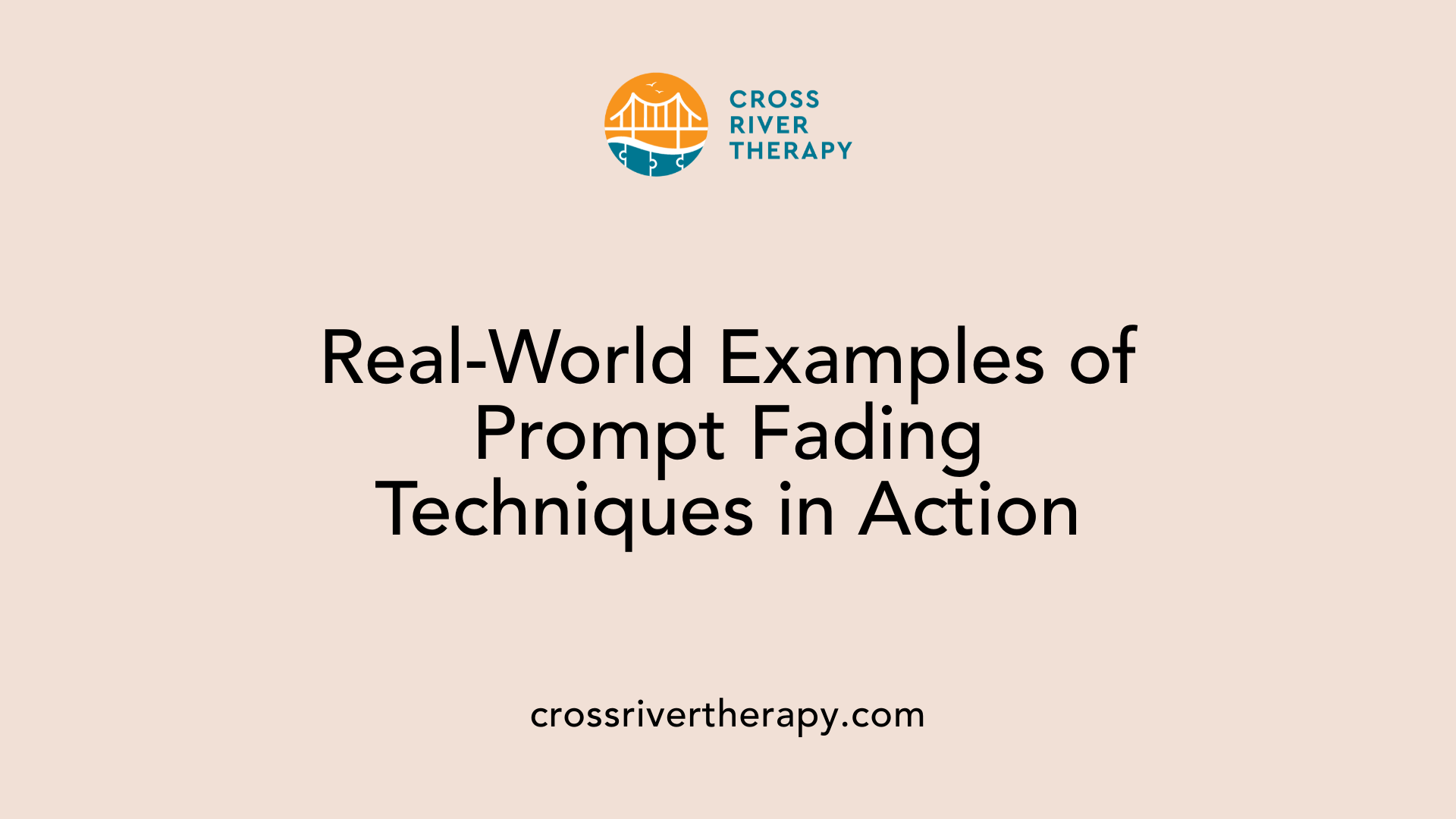
Can you provide examples of prompt fading techniques in ABA?
Prompt fading techniques in Applied Behavior Analysis (ABA) are essential strategies for fostering independence in learners by systematically decreasing the level of assistance provided. Two predominant methodologies employed are Most-to-Least (MTL) and Least-to-Most (LTM) prompting strategies.
Most-to-Least (MTL): This method begins with the most intrusive level of assistance, such as full physical guidance. For example, if teaching a child to wash their hands, a teacher might first guide the child’s hands through the entire motion, then gradually reduce support to just verbal cues or gestures, eventually leading the child to perform the task independently.
Least-to-Most (LTM): In contrast, LTM starts with minimal assistance. For instance, the teacher could initially provide only a verbal prompt, and if the child does not respond, would then increase support to include visual cues or physical guidance as needed. This strategy encourages initial attempts at independence while still offering support when necessary.
What other approaches are used in prompt fading?
In addition to MTL and LTM, techniques like time delay and proximity adjustments play a role in prompt fading.
- Time Delay: This involves waiting a brief moment before providing a prompt, allowing the learner time to respond independently.
- Proximity Adjustments: Altering how close the educator is to the learner can also be effective in fading prompts, gradually teaching the learner to initiate responses without immediate support.
Consistent monitoring of the fading process is crucial to ensure the learner achieve independence effectively, adapting approaches based on progress.
Diverse Types of Prompts in ABA
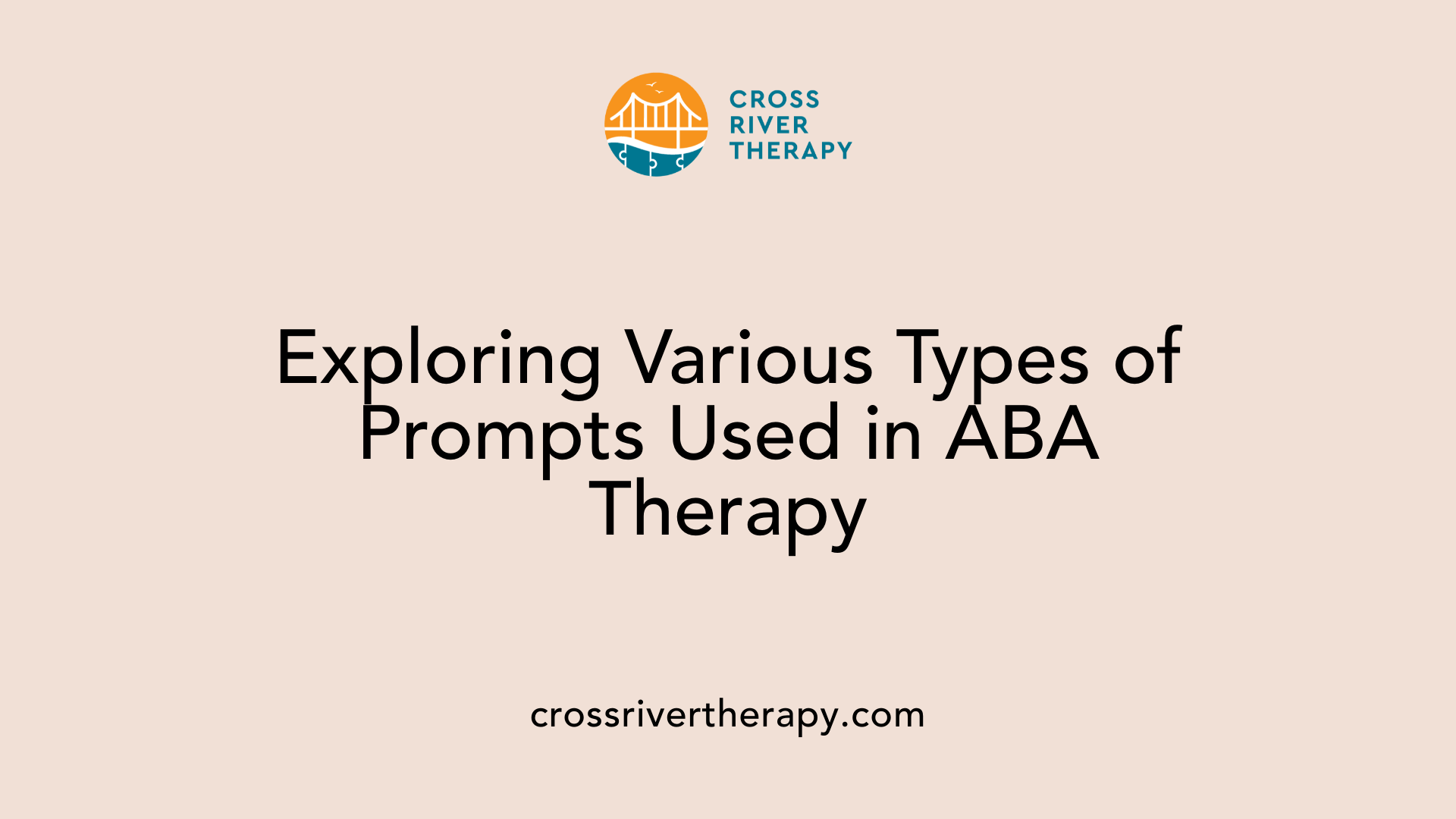
What are the different types of prompts used in ABA therapy?
In ABA therapy, several types of prompts support learners in acquiring new skills. Each type is designed to assist at different levels of intrusiveness and engagement.
- Verbal Prompts: These provide spoken cues to guide learners, such as reminders or specific instructions.
- Gestural Prompts: Non-verbal signals, like pointing or nodding, that suggest the desired action.
- Modeling Prompts: Demonstrating the task so the learner can imitate the behavior.
- Physical Prompts: Involve direct assistance, ranging from full hand-over-hand guidance to lighter touches that encourage the learner to complete the task.
- Visual Prompts: Use images or written cues to provide context and reminders about the skill to be performed.
- Positional Prompts: Placing the materials or correct responses near the learner to encourage participation without direct assistance.
The overarching goal with these prompts is to facilitate the learner's journey toward independence. By utilizing various prompt types, educators can tailor their support to the individual needs of each child, promoting skill acquisition and eventual self-sufficiency in executing tasks.
Function of prompts in skill acquisition
Prompts serve essential roles in skill acquisition by acting as cues that lead learners towards the correct response. They bridge the gap between initial learning and independent performance, aiding children in mastering tasks without becoming overly reliant on external assistance. Additionally, effective prompting strategies enhance the learning process by providing appropriate levels of guidance that can be systematically faded, fostering confidence and self-esteem as learners achieve success.
Functions of Specific Prompt Types
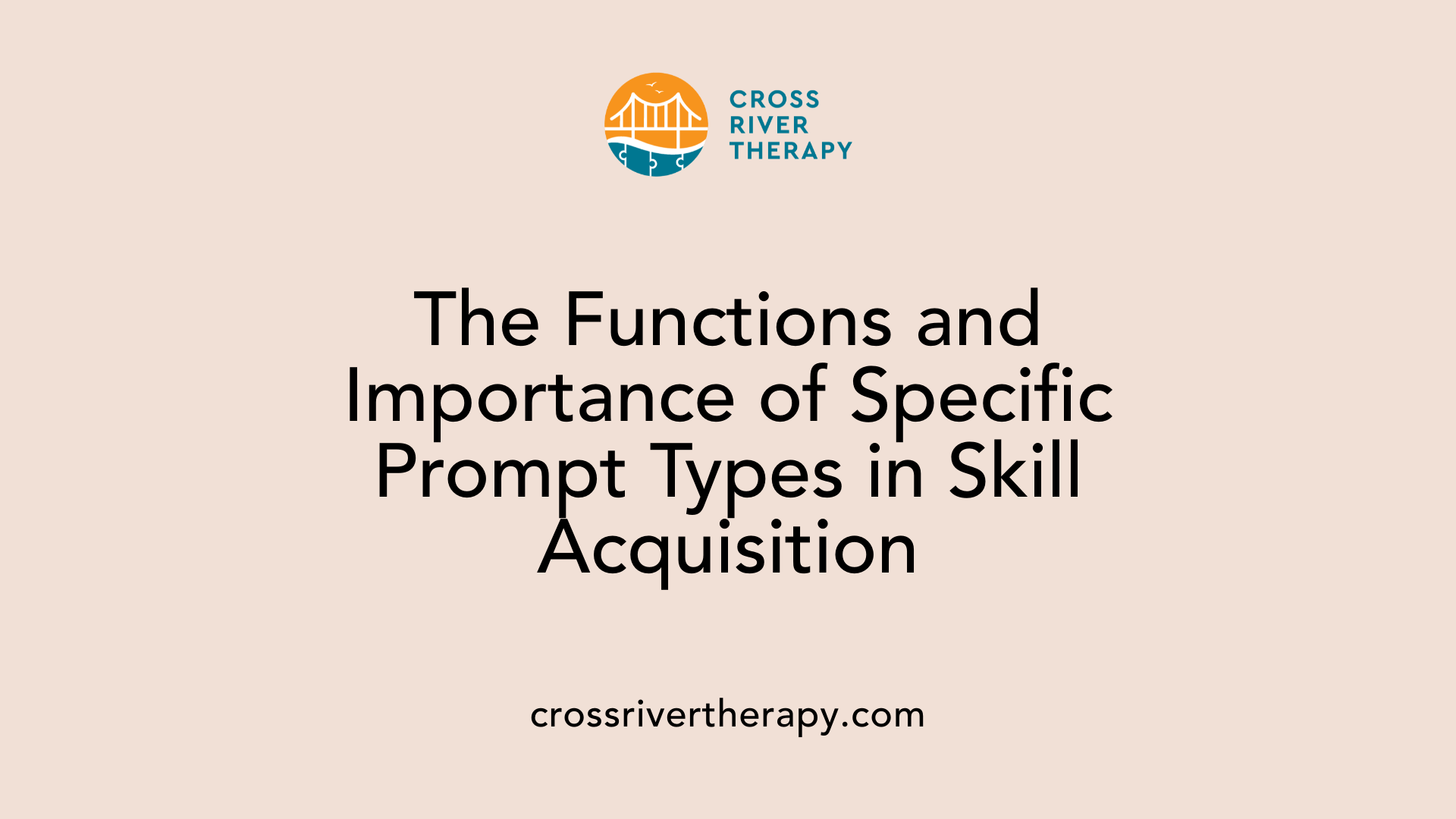
How do specific prompt types, like gestural or verbal prompts, function in ABA?
Specific prompt types, such as gestural and verbal prompts, serve crucial roles in Applied Behavior Analysis (ABA).
Gestural Prompts
- These include non-verbal cues such as pointing, nodding, or using facial expressions.
- Gestural prompts are particularly valuable for individuals who might have communication difficulties, such as those with autism. They provide visual cues that help guide clients toward a correct response.
- For example, a teacher might point to a hand-washing station to prompt a student to begin the task.
Verbal Prompts
- Verbal prompts involve auditory cues like instruction or hints that guide the learner.
- They can vary in specificity, from direct instructions to partial prompts or subtle hints.
- For instance, a verbal prompt might include saying, "Can you please say hello?" to encourage social interaction.
Utilizing prompt types based on learner needs
The effectiveness of any prompt type is ultimately determined by matching it to each learner’s individual needs and the specific task at hand.
- Tailoring Approaches: It's essential to assess the learner’s capabilities when deciding which prompt to use.
- Prompt Hierarchy Implementation: This framework helps educators choose appropriate types of prompts based on their intrusiveness and how much support the learner requires at that moment.
- Fading Strategy: Over time, both gestural and verbal prompts should be systematically faded to promote independence, enabling the learner to perform tasks with less reliance on external assistance.
Utilizing these prompt types in a thoughtful, individualized manner significantly boosts the efficacy of ABA therapy, fostering skill acquisition and independence.
Empowering Learners Through Strategic ABA Techniques
By employing a structured approach to prompting and fading, ABA therapy facilitates not only the acquisition of new skills but also bolsters the independence and confidence of learners. Through careful planning and implementation of these techniques, educators and therapists can ensure that individuals who benefit from ABA therapy can confidently transition to completing tasks independently. Understanding and applying these methods can significantly impact educational success and overall quality of life for those with developmental challenges, guiding them towards achieving their full potential.
References
- ABA Prompt Fading: Procedures, Examples & Best Practices
- What is Prompting, and How is it Used in ABA Therapy?
- Understanding Prompting and Fading in ABA Therapy: A Guide for ...
- Prompt Hierarchy in ABA: A New Perspective
- Procedures for Prompt Fading - The Autism Helper
- The Art of Prompting: A Guide to the Prompt Hierarchy in ABA
- What Are Prompting and Fading in ABA Therapy?
- Prompts and Prompt Fading for Building Independence - T-TAC ODU



